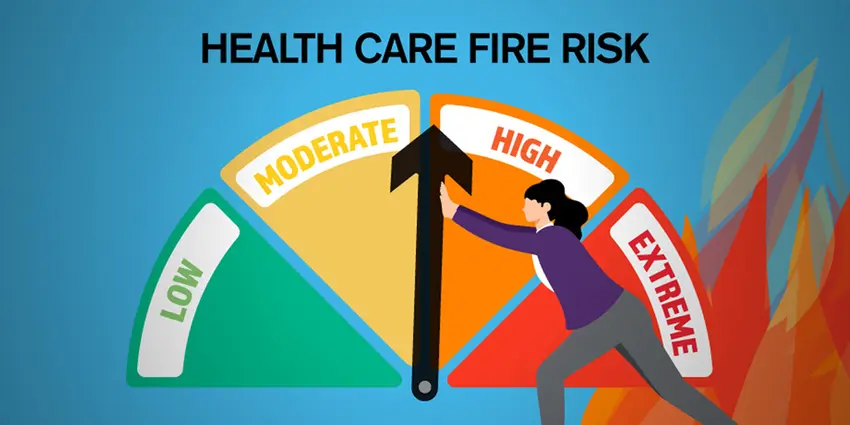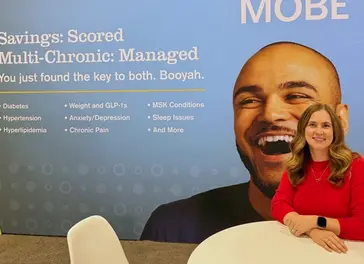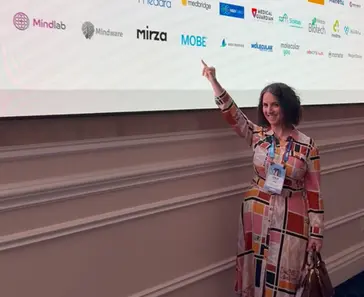



Walking through HLTH 2025, the energy (and anxiety) was undeniable—leaders, innovators, and forward-thinkers all grappling with the burning realities shaping health care’s future. How do we start preventing crisis fires, not just reacting to them?
The fires we are fighting are ballooning costs, disengaged members, vendor fatigue, and an explosion of complicated, multi-chronic conditions. But here’s the upside: these realities are sparking desperately-needed innovation. HLTH 2025 helped start new conversations, but turning ideas into action all hinges on the choices we make, starting today.

Innovation: Turning Data into Action to Prevent Fires
Overwhelm isn’t just a feeling; it’s built into the system. Payers struggle with costs climbing faster than budgets. Employers juggle too many vendors, hoping to keep programs afloat and contracts in line. People face a maze of disconnected care, while the likelihood of living with multiple chronic conditions has never been higher.
As one employer put it: “I only have the capacity to put out fires. If it’s not burning yet, it has to wait.” That mindset is everywhere—and dangerous—because today’s smoldering embers can become tomorrow’s runaway wildfires.
But that’s where change is catching on. Predictive analytics and smart use of historical claims data now flag risks before they burn out of control. We’re not just noticing the ultra–high-cost claimants; we’re also identifying those often-missed, rising-risk individuals. By leveraging these insights, organizations can deliver targeted interventions and resources sooner.

Innovation: Integrating Medication Management and Lifestyle Support
Conversations around GLP-1s were everywhere at HLTH, for good reason. These medications have real impact on people with diabetes or obesity, but too often, conversations stop at coverage as I kept hearing, “Are you covering them or not?” That approach misses a bigger point—even the best medication alone won’t deliver lasting progress.
True progress in health happens when medication management and lifestyle support work hand in hand. Pharmacists can play a vital role beyond dispensing prescriptions—they can help patients find the right medications, adjust dosages, reduce costs, and ensure safety. When combined with healthy lifestyle habits like proper nutrition, regular exercise, quality sleep, and stress management, medications become more effective, leading to more lasting improvements in overall well-being.
This approach addresses a critical question from HLTH 2025: How can we effectively support individuals, whether or not GLP-1s are covered? Lasting progress lies in combining clinical medication support with practical, everyday habit-building.

Innovation: Technology That Empowers Human-to-Human Care
The expo floor was proof: AI is moving fast, streamlining workflows, powering earlier diagnoses, and mining oceans of data.
AI is incredible when used in the right way, like sifting and predicting billions of claims records. But it should never replace human care. Instead, technology should free people to spend even more time building trusted relationships that drive behavior change and real outcomes. We’ve found that half of all issues related to meds wouldn’t show up in the data or electronic medical records.
By creating an environment founded on trusted relationships, we open more possibilities to uncover the information that claims data is missing—context, behavior, and emotion. People aren’t algorithms; they crave empathy, encouragement, and a human connection to really get at the root of the problem.
This was evident throughout the expo floor, as I heard time and time again: “We want AI to enable people to spend more time with people; providers to spend more time with patients.”

Innovation: A Whole-Person, Data-Driven Approach to Close the Gender Gap
Women’s health—especially for those managing multiple chronic conditions—has too often been sidelined. That’s led to missed diagnoses, under-treated conditions, and rising costs, especially as most women eligible for programs now juggle four or more chronic conditions.
HLTH 2025 spotlighted the urgency of our current landscape. For women, chronic conditions interact in unique and complicated ways; hormones, autoimmunity, and life stages all add to the challenge. New analytics now reveal hidden risks and help teams intervene sooner. But true innovation happens when we close the loop: using data as a launchpad, then delivering whole-person, human-led care tailored to women facing complex conditions. We need more progress, focus, and support around women’s health by considering the whole picture.




If HLTH 2025 proved anything, it’s that prevention is an active, daily choice. While some fires are inevitable, there’s opportunity and untapped potential to proactively keep many from burning out of control. By championing smarter use of data, combining medication and lifestyle support, embracing tech that frees up human teams, and closing care gaps for those who need it most, you can lead the way to real prevention that beats firefighting.